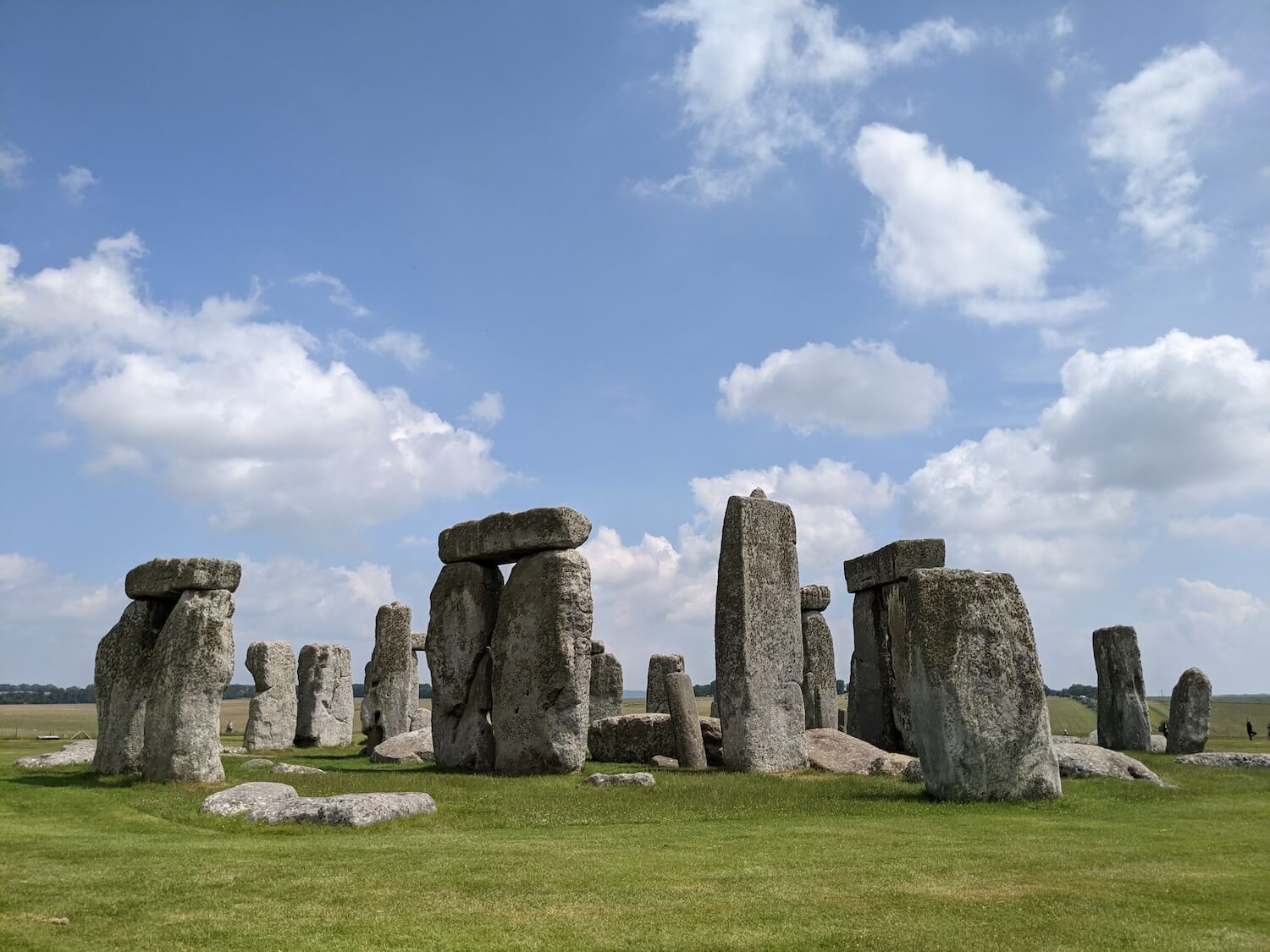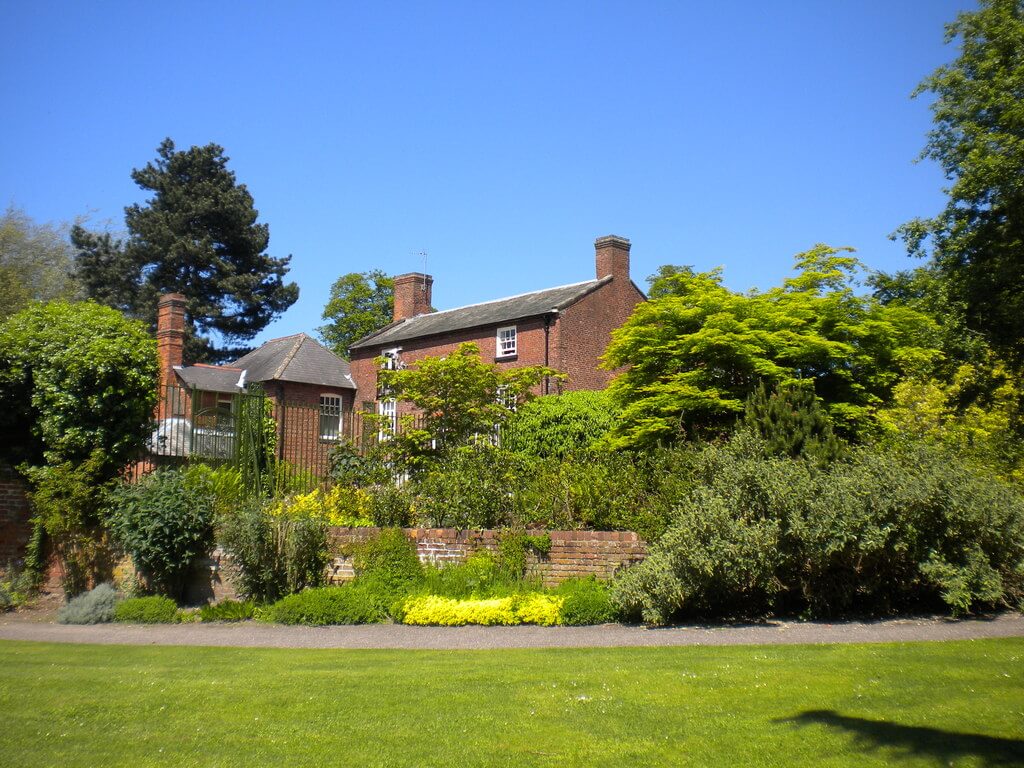15 Amazing England National Animals and Where to Find Them
From the elusive National Animal of England, to the animals of England you’ll find in the park – read our guide to amazing England animals and, where you’ll find them. The best animal days out are here!
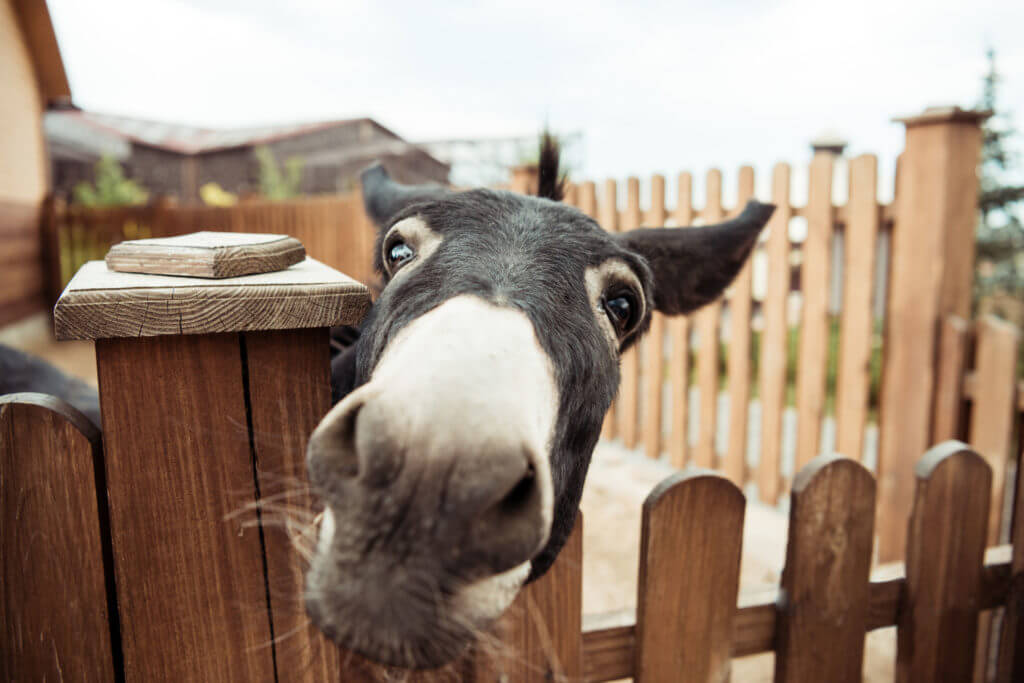
English wildlife may not be able to rival the great lions of Africa, or the tigers of India. Nor can it compete with the polar bears of the Arctic, lemurs of Madagascar or the unique marsupials of Australia. But England is home to an array of amazing creatures, from the adorable red squirrel to the ferocious killer whale. Once common species are returning to English skies and countryside, from the beaver to the red kite and white-tailed eagle.
Let us introduce you to some of the most exciting England animals, and show you where to find them in the country. If you’re looking for the best animal days out, this is the list you need.
What is the national animal of England?
The national animal of England is the lion. Which is interesting, because you can’t actually find lions in the wild in England. The only way you’ll see a lion in England is to visit one of England’s top zoos.
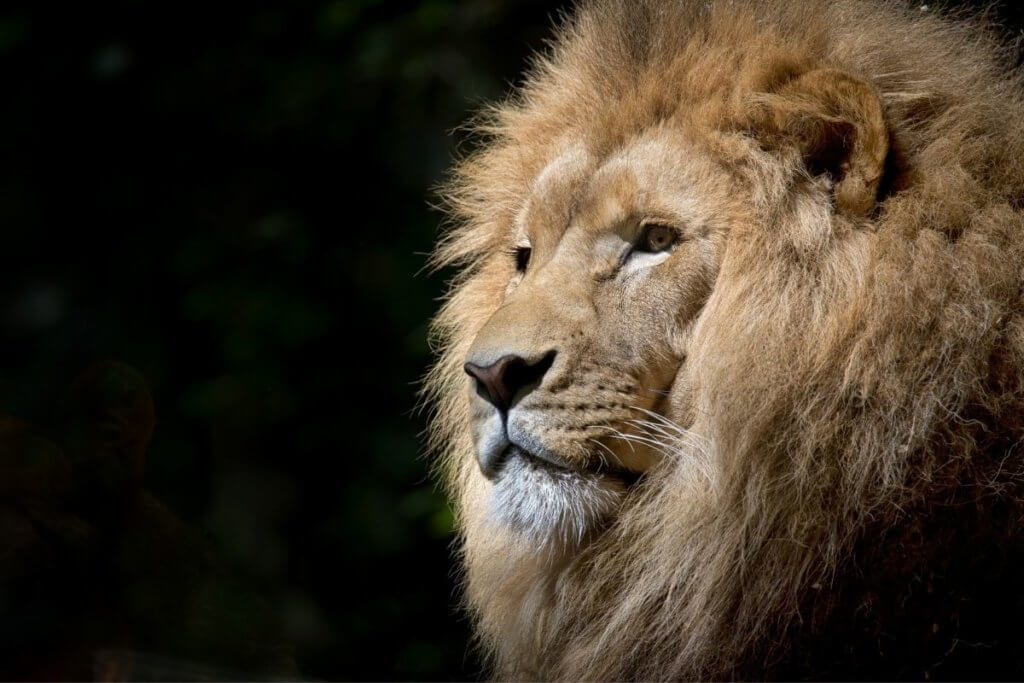
The lion is England’s national animal because of its strength, courage, dignity and pride – all qualities us English people like to think personify us. Back in the Middle Ages lions were kept in the Tower of London although that all stopped when we realised animals have rights too.
If you look back in history, Richard the Lionheart is our most famous lion lover – and was once the King of England. Apparently, he loved a castle!
Anyway, let’s take a look at the animals in England you can actually find roaming around.
15 Amazing England National Animals (the Best Animal Days Out!)
Here are some of our favourite animals in England for you to look out for on your England adventures. If you’re looking for wild animals England will offer you some great sightings!
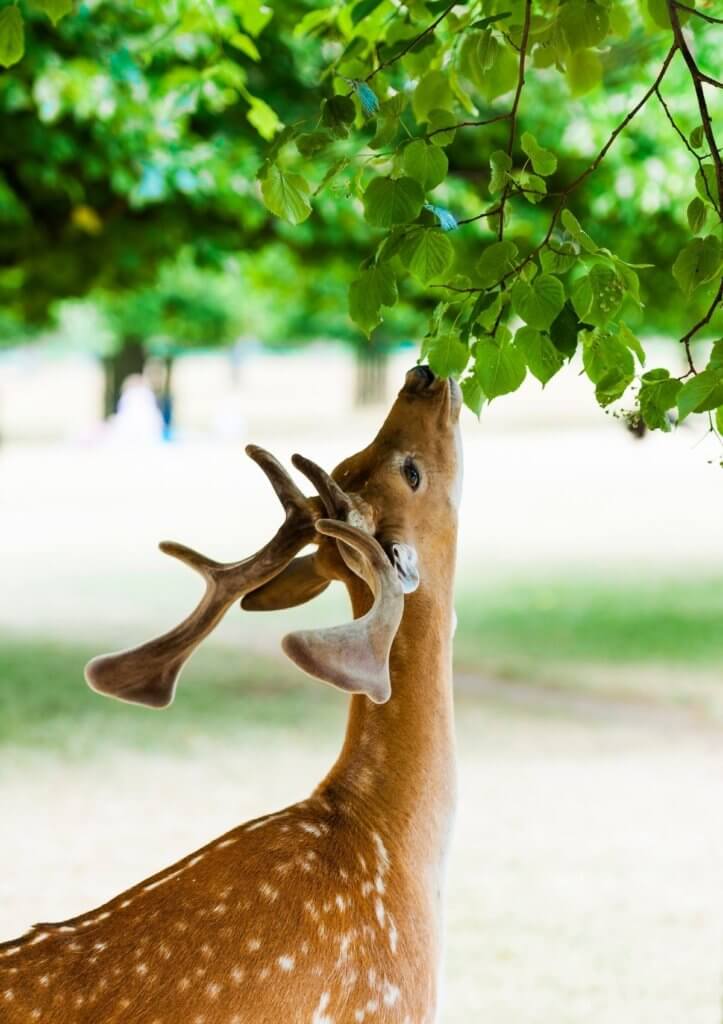
1. White-tailed eagle in England
The white-tailed eagle is England’s largest bird of prey, with a wingspan of more than two metres. Also known as sea eagles, they prey largely on fish, but are also known to eat other birds and mammals.
The white-tailed eagle actually went extinct in England during the early twentieth century but has returned to English skies thanks to conservation and reintroduction efforts. There are now approximately 106 breeding pairs according to the RSPB.
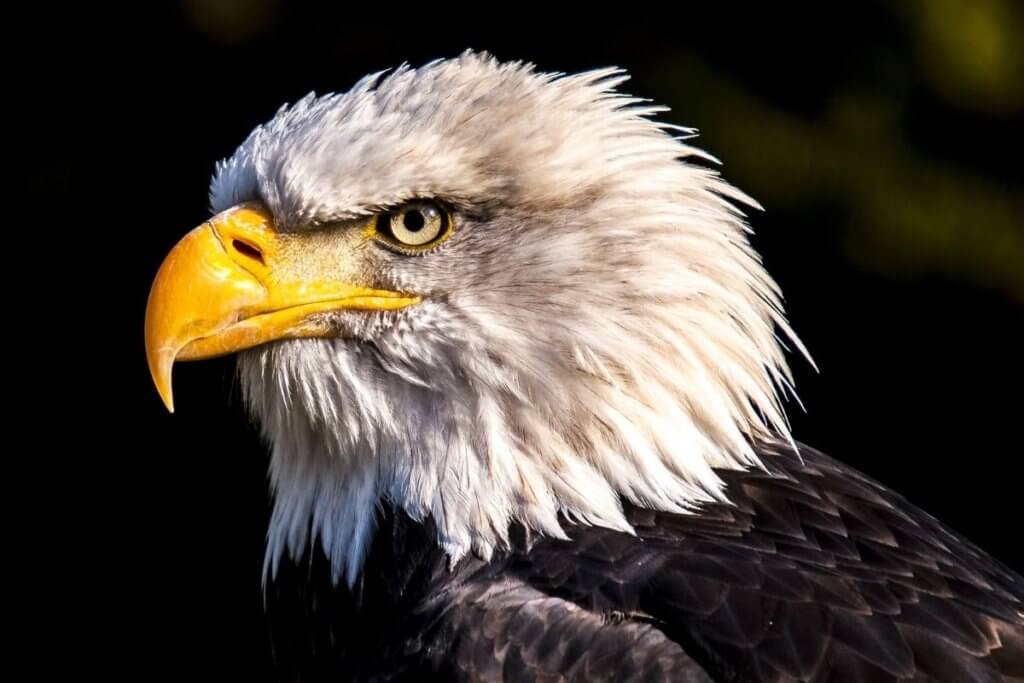
Where to spot these English animals
Animal days out: The eagles are found in greatest numbers in Scotland, but there is a growing English population on the Isle of Wight, where successful reintroductions have taken place.
In summer 2020, a white-tailed eagle was even spotted over London for the first time in hundreds of years. The eagles fly long distances, so wherever you travel in England for your wildlife adventure, keep your eyes on the skies!
READ MORE: The Most Popular Garden Birds in England
2. Red squirrel in England
The tale of the red squirrel is a tragic one.
Once widespread across the UK, the species has been out-competed by the introduced American grey squirrel, which is larger and also spreads disease amongst the native reds. Unfortunately, the red squirrel now only clings on in Scotland, northern England and the Isle of Wight.
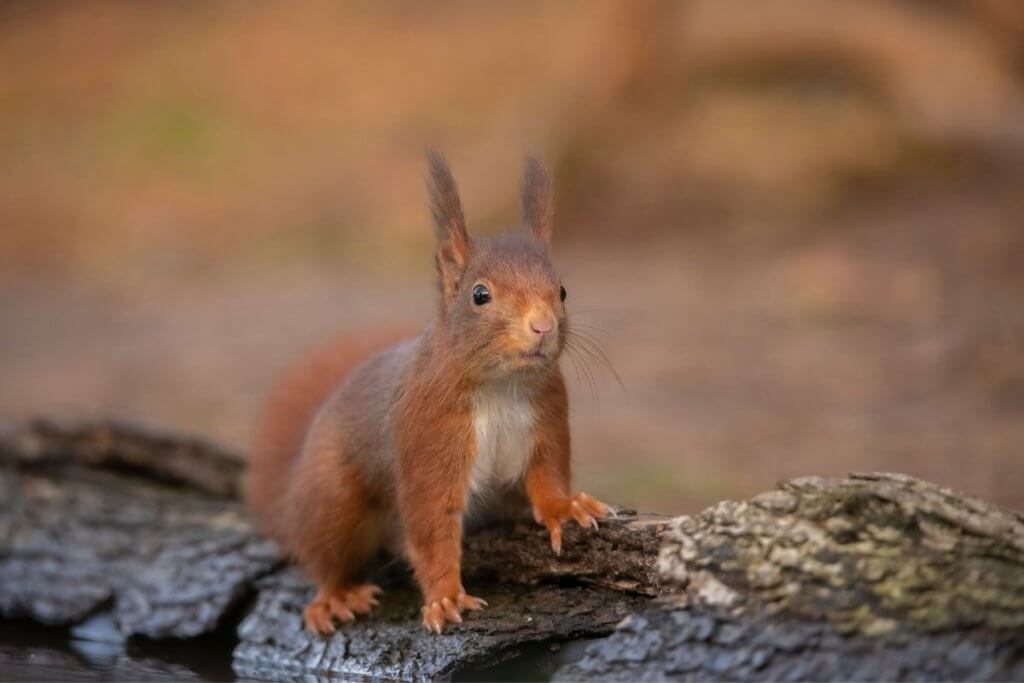
Conservation is helping to stem the declines though. The recent reintroduction of pine martens to Wales has been seen as a breakthrough in red squirrel conservation which should spread over.
While red squirrels evolved alongside pine martens, greys did not, and are helpless against this predator. So the pine marten is helping the red squirrel to bounce back by reducing the number of greys.
Where to spot these English animals
Animal days out: In England, the best places to see red squirrels in the wild are in the most northern regions, such as the pine forests of Northumberland and the Lake District. There is also a surviving population on the Isle of Wight, where greys have not been introduced. Native animals of England.
That should give you a clue for our England wildlife quiz. Click the link to see how high you can score after you’ve read this post.
3. Beaver in England
Another English reintroduction success story for England animals is that of the Eurasian beaver. Hunted to extinction around 500 years ago, their return was first noticed in Scotland, where it remains shrouded in mystery. There’s now an established wild population and in 2020 the Scottish government declared them a native species once again, protecting them.
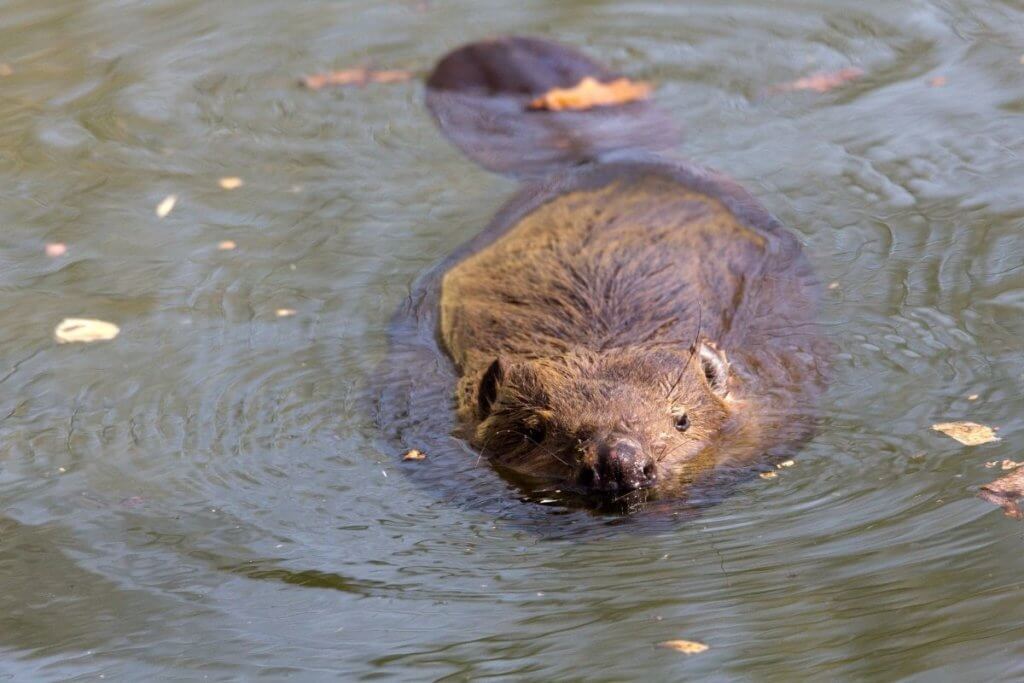
In England, a similar story is unfolding.
Wild beavers appeared along the River Otter in Devon in around 2008, with no suggestion as to how they got there. A trial was undertaken which determined that the beavers had a positive impact on the environment, even helping to prevent flooding downstream with their dam building and boosting the numbers of other species.
Where to spot these animals in England
Animal days out: The UK government is working on a national beaver strategy and fenced release sites are springing up all over the country, from the South Downs National Park to Cornwall, Cheshire and Devon. It’s hoped that soon the fences will be removed, allowing the beavers to spread naturally. For now the River Otter in Devon – one of the most important rivers in England – remains the only place you can see truly wild beavers in England.
These are one of the most interesting England national animals around.
READ MORE: The Best National Parks in England
4. Barn owl in England
The striking, all white barn own is one of the most recognisable animals in England. Often seen at dusk, flying low over a field in search of voles, barn owls are the stuff of legend.

Across the UK, there are thought to be around 12,000 pairs of barn owls with a large proportion of these to be found in England, and the number is growing. Barn owls now depend largely on humans for nest sites, and as a result, many are found on protected reserves, where nest boxes have been put up for them.
Where to spot these animals in England
Animal days out: Good places to spot this iconic bird in the wild include the Wildlife Trust reserves at Blakehill Farm (Wiltshire), Hickling Broad (Norfolk), The Great Fen (Cambridgeshire) and Blue House Farm (Essex).
5. Otters in England
Elusive and hard to spot, otters are another species which man has long persecuted but which is now finally making a comeback in England. Thought to exist in every English county, the best chance of spotting an otter is along rivers and in well protected wetland.
These semi-aquatic mammals live on mainly fish and amphibians, so they never stray far from the water.
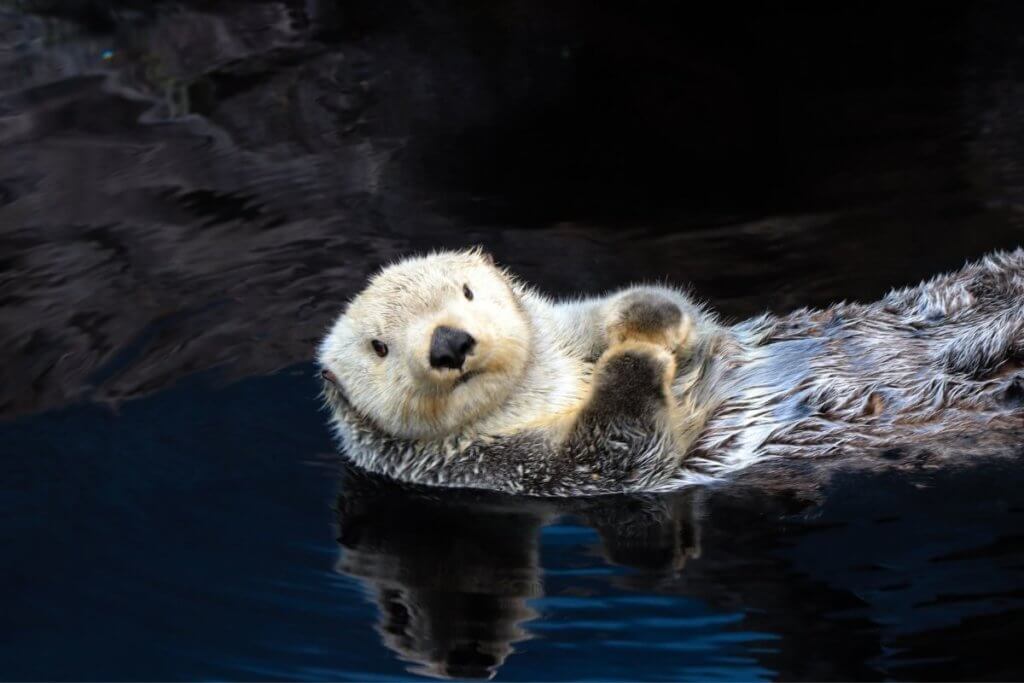
Where to spot these England animals
Animal days out: East Anglia (the watery east of England) and the south-west are the counties in England with the best otter densities, though spotting one of these shy creatures is far from guaranteed – a great deal of luck is needed.
These England national animals are slippery little fellas!
6. Killer whale in England
We don’t often think of killer whales as English wildlife, these ferocious but beautiful dolphins (for they are dolphins, not whales) are more associated with faraway places but there are places off the British coast where it is very possible to see these amazing creatures.

Where to spot these England animals
Animal days out: By far the most common place to see them is in the Shetlands, in the waters north of Scotland. On occasion they do travel as far south as the English coast, although your chances of spotting one are incredibly slim, but we wanted to add them to our England animal list, as there’s a teeny tiny possibility, and they sound cool.
If you love marine life, check out the best aquariums in England for more magical species and cool fishies.
7. Deer in England
There are six species of deer living wild in England, which, make it a more legitimate England animal if you were feeling any bitterness about us adding in the killer whale above.
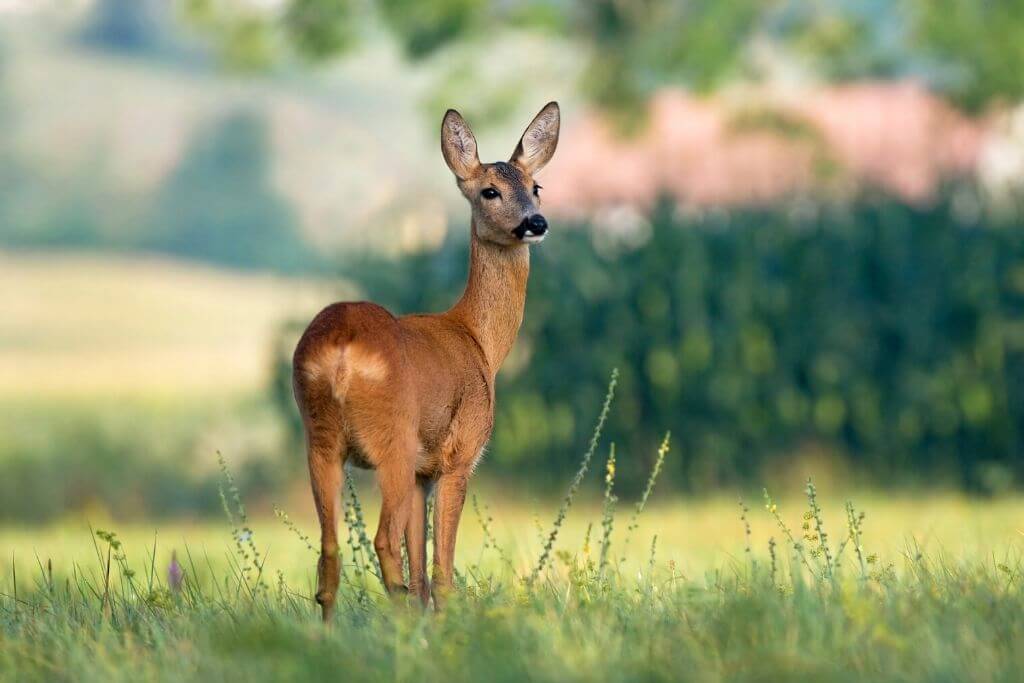
Only two of the six species are truly native animals to England though, the red and roe deer. Fallow deer have been around since the Norman times, whilst muntjac, sitka and Chinese water deer have been introduced more recently.
Deer are common in England. In fact, they are so common that they are actually damaging our ecosystems by nibbling down all the new trees before they have a chance to grow. This is because they have no predators left in England, and there is growing clamour for the return of the Eurasian lynx to England, as has been seen in much of Europe.
As far as UK animals go, deer in England are among the easiest to spot, if you know where to find them.
Where to spot these England animals
Animal days out: One place you may not expect to find deer is in the heart of London. Yet the English capital is home to an idyllic wilderness in Richmond Park, perhaps the only place in the city where you can’t hear traffic!
More than 600 fallow and red deer inhabit the park, which is open to walkers and cyclists all year round. It’s a great place for Londoners to escape the city for a dose of nature.
8. Basking shark in England
These harmless sharks are one of the ‘most unique’ animals in England.
Look at their cute little faces…
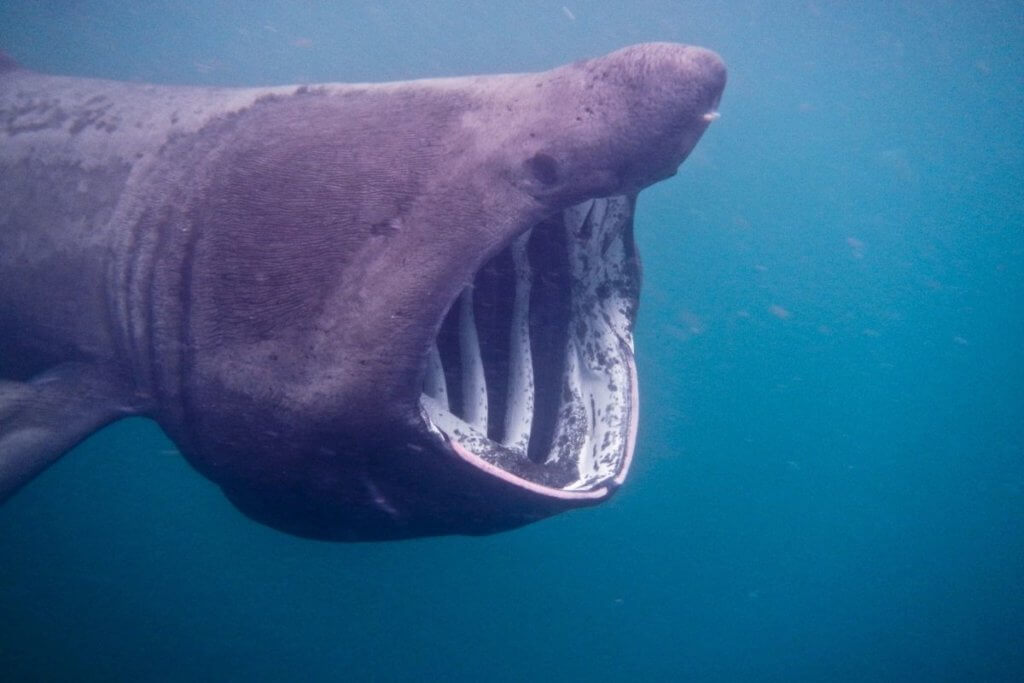
Growing as long as a double decker bus, the basking shark is the world’s second largest fish (after the whale shark), weighing up to seven tonnes and living for 50 years. They are also completely harmless, swimming along serenely with their giant toothless mouths open to hoover up plankton and other microscopic organisms which they feed on.
This gentle giant can be seen right here in England!
Where to spot these England national animals
Animal days out: Penzance in Cornwall is the place to head for snorkelling trips and boat trips to see this incredible creature. In fact, basking sharks are fairly common in Cornish waters, and can be spotted between May and September each year as they migrate.
9. Red kite in England
Pushed to the brink of extinction in the early 1900s, more than a hundred years of conservation has paid dividends, with the red kite now a common species in England once again (in fact this author saw one himself flying over West Ealing, London just one week ago!).

A 1995 reintroduction to the Chiltern Hills in the East Midlands was extremely successful, with numbers multiplying and the bird steadily extending its range in all directions.
Where to spot these British animals
Animal days out: With distinct forked tail feathers, the birds are easily recognisable in flight, and the Chilterns remain the best place to spot them. They can often be seen flying high over the M40 between London and the Midlands, swooping down to seize their prey.
Look up!
10. Seals in England
The lumbering gentle giant, the seal, is one of our favourite England animals to see. Grey and common seals can be seen all along the English coastline, but you might have to join a seal boat trip to guarantee a sighting.
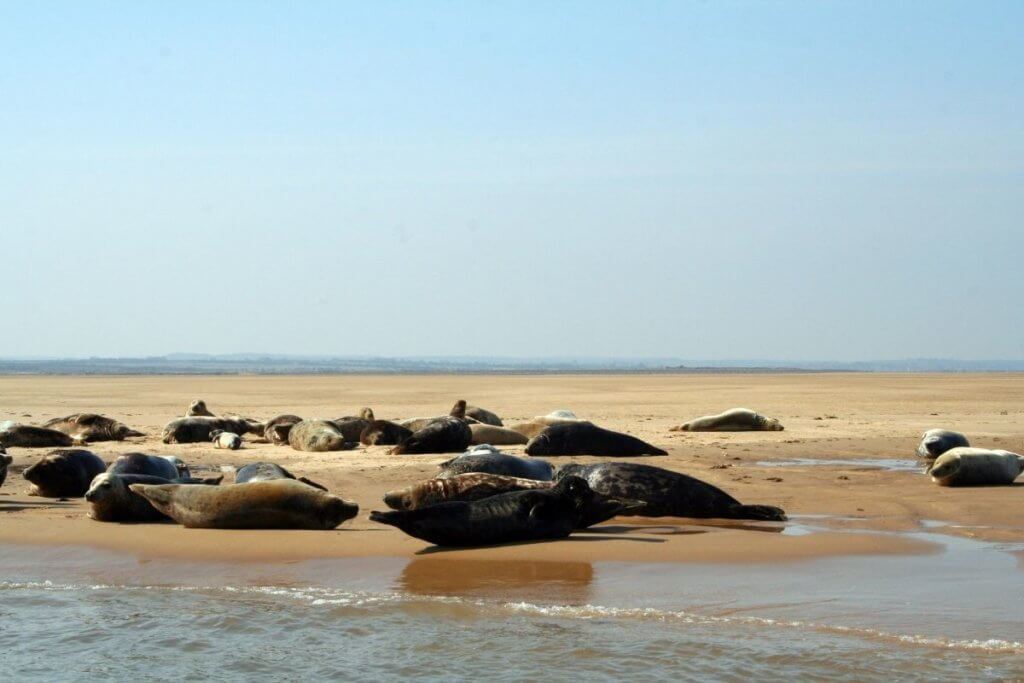
Where to spot these animals in England
Animal days out: By the far the best place to spot them in the wild is in Norfolk. Specifically, Blakeney Point, which is home to England’s largest colony of grey seals. The animals are resident all year round and boat trips ensure you can see them both on land and out at sea, without fear of disturbing the animals during sensitive periods such as the breeding season.
Other great places to spot seals in England include Skomer Island in Pembrokeshire, in Wales, and the Farne Islands, Northumberland.
Want to know where the top animal experiences in England are? Click here!
11. Puffin in England
One of the most amazing England animals out there is the puffin. We need to look after these little guys as they’re classified as vulnerable. If you see them, don’t touch!
“The puffin is included on the Red list of UK Birds of Conservation Concern after being listed as Vulnerable on the IUCN Red List. It is very vulnerable to adverse changes in the environment because its breeding population is concentrated on a small number of sites.“
– THE RSPB
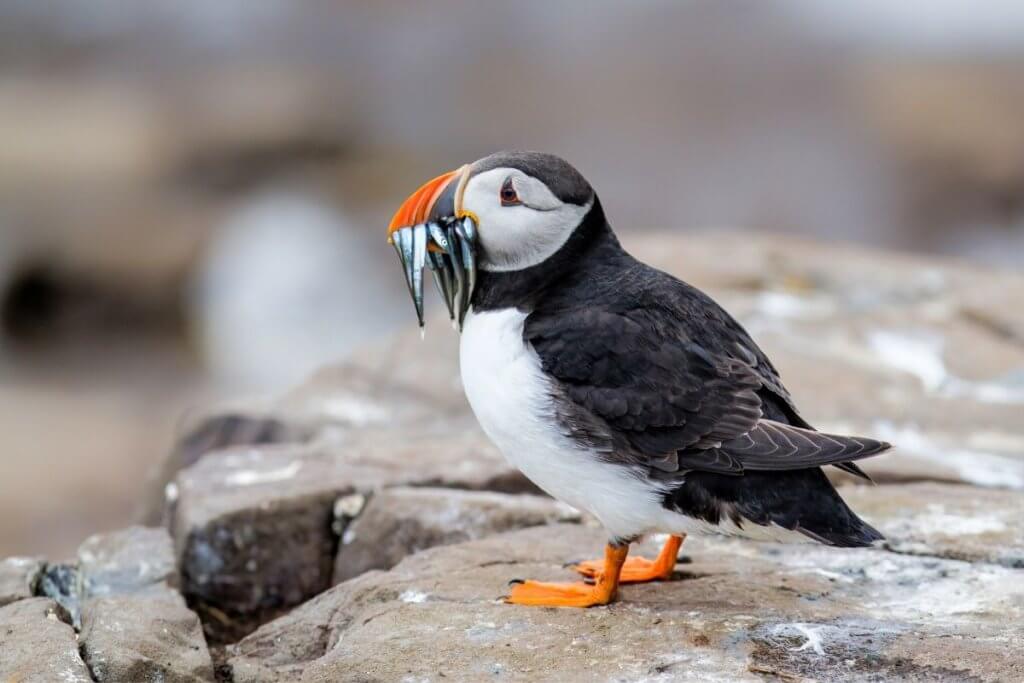
Puffins are one of the most popular British wild animals to see, as they’re so rare. Good for us though, there are plenty of opportunities to see them around the coastline of England.
Where to spot these animals in England
Animal days out: You can do puffin day trips from Milford on Sea in the New Forest, Hampshire, and from Mudeford Quay in Dorset. The most popular place to see puffins though, is on Lundy Island off the coast of Devon.
12. Toads in England
You’ll need to be around water to spot this England animal in the rushes. Toads are a staple in British wildlife, and we love them.
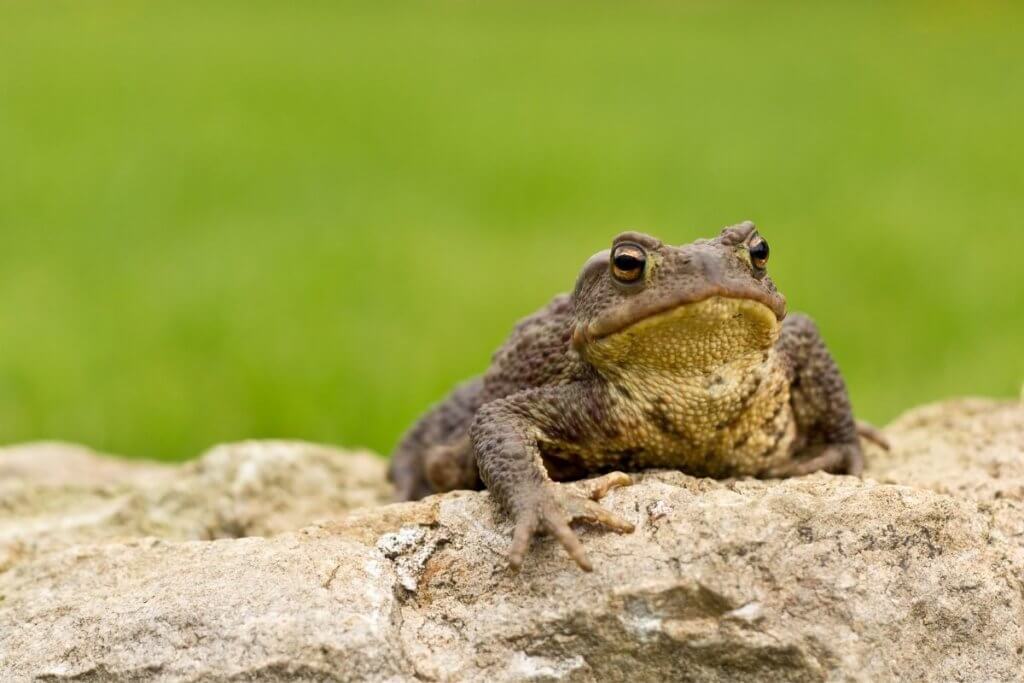
Where to spot these animals in England
Animal days out: Toads can be found all over England, just look in and around pond during breeding season from March to October. Look around woodland areas, in parks, woods and fields and in slow-moving rivers.
13. Ponies in England
Go to the right places, and ponies in England can actually be pretty common. They might seem pretty chill and docile, but you need to keep your distance and not scare them into scaring you. You can usually approach, but don’t get closer than a few metres, an you never want to go near baby ones, or young ponies in England.

Where to spot these animals in England
Animal days out: The best pony hangout in England has to be the New Forest in Hampshire. Also, on the White Cliffs of Dover in Kent, and in Dartmoor and Exmoor National Parks too.
14. Badgers in England
Unfortunately most often seen on the side of the road, in various states of roadkill, badgers are an iconic animal in England. Their black and white striped faces are super cute, but in general, they only come out at night so you might have problems spotting these wee fellas about.
Good luck seeing these animals in England!
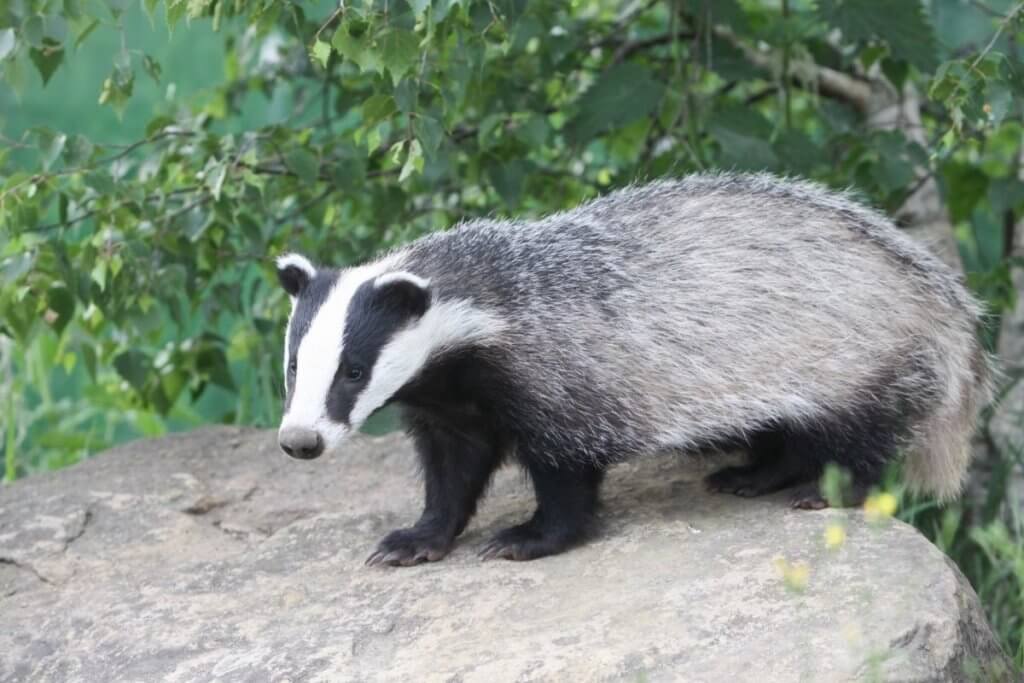
Where to spot these England animals
Animal days out: Let’s see what the Woodland Trust have to say about where to find these animals in England shall we?
“Badgers are found across the UK, with the highest numbers in southern England. Ideal badger habitat is a mixture of woodland and open country. The species lives in a network of underground burrows and tunnels know as a sett. Each badger territory will include a main sett and several smaller outlying setts.”
– WOODLAND TRUST
15. Hedgehogs in England
Aw, we love hedgehogs in England. There used to be a great TV show about Tiggywinkles Hedgehog hospital on British TV which gave you an insight into the plight of these little guys. They have it tough.
England’s hedgehog population is in decline, we need to look after them.
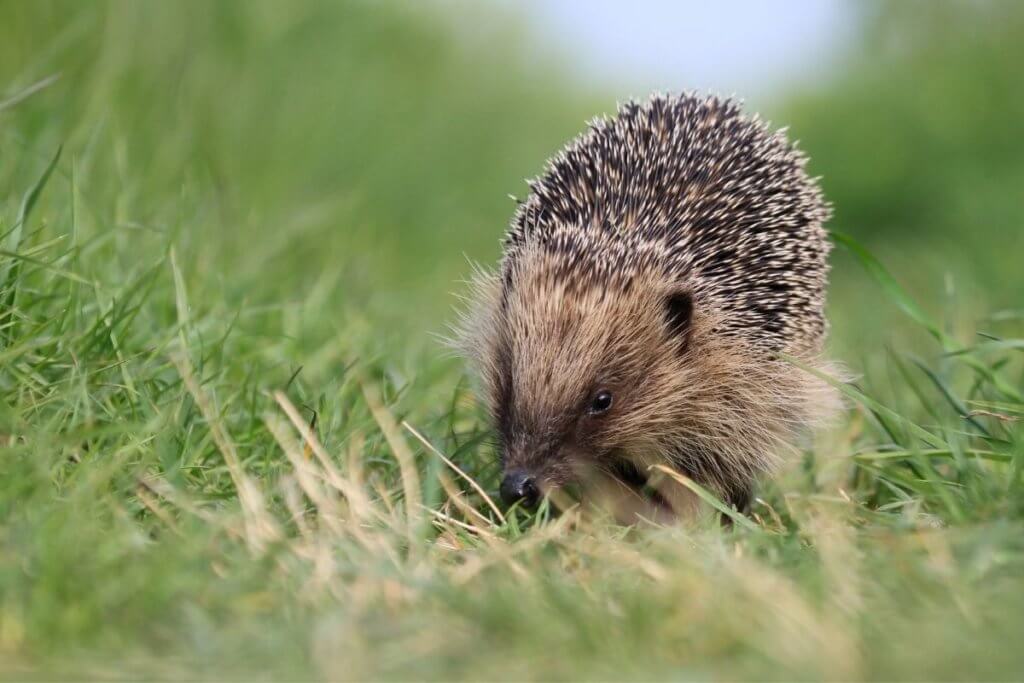
Where to spot these wild animals in England
Animal days out: If you want to find a hedgehog in England your best bet is a summer night from March to November. They like garden sheds, compost heaps, hedges and gardens. You can find them all over England. You can build a hedgehog house if you really want to attract this British animal into your garden.
England national animals
As you can see, England is home to a host of amazing creatures, despite its reputation as a pretty desolate country, wildlife-wise. The truth is that things are better than they used to be for a lot of species.
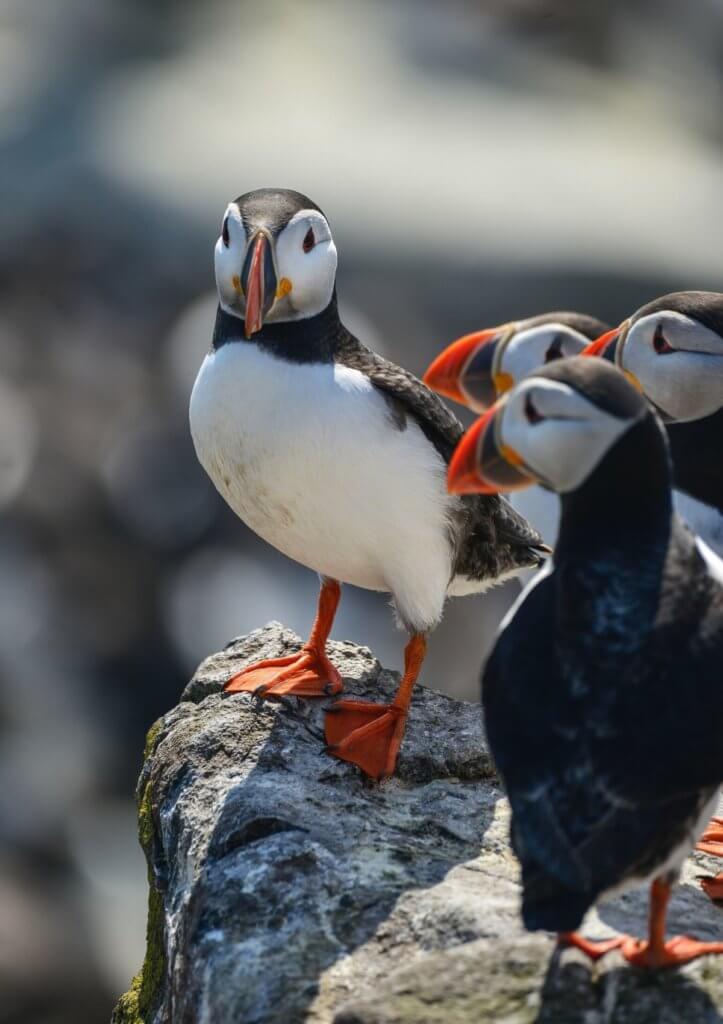
Animals such as the beaver, white-tailed eagle and red kite have made a stunning comeback to England, giving hope that people will be able to enjoy seeing them and many other creatures like them in the wild for many years to come.
Quicklist of the national animals in England
- White-tailed eagle in England
- Red squirrel in England
- Beaver in England
- Barn owl in England
- Otters in England
- Killer whale in England
- Deer in England
- Basking shark in England
- Red kite in England
- Seals in England
- Puffin in England
- Toads in England
- Ponies in England
- Badgers in England
- Hedgehogs in England
PIN THIS ENGLAND ANIMALS POST FOR LATER

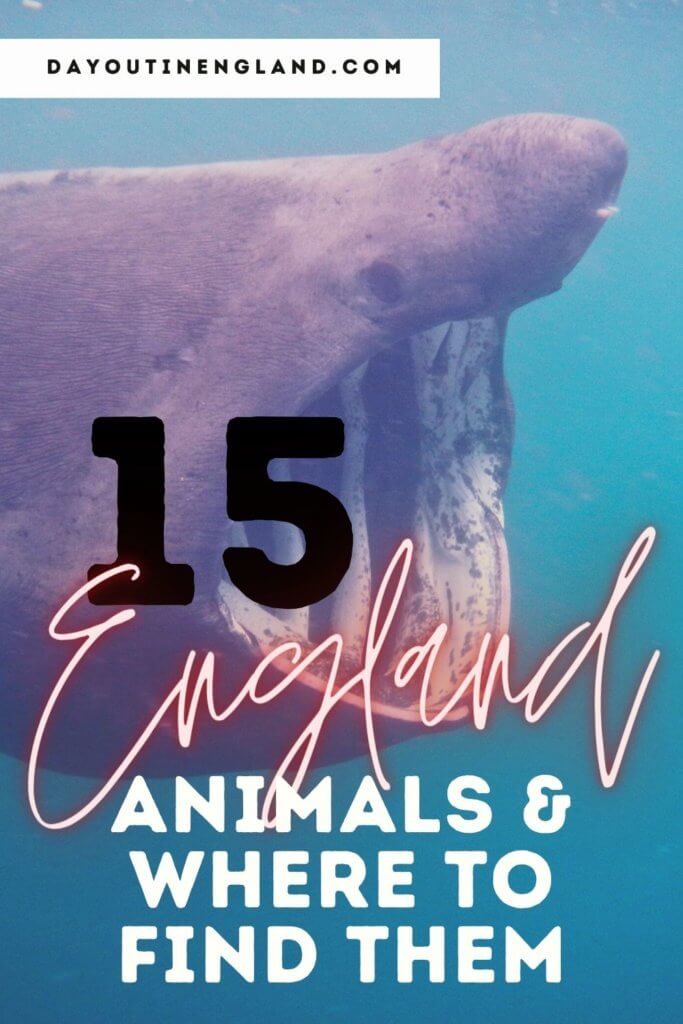
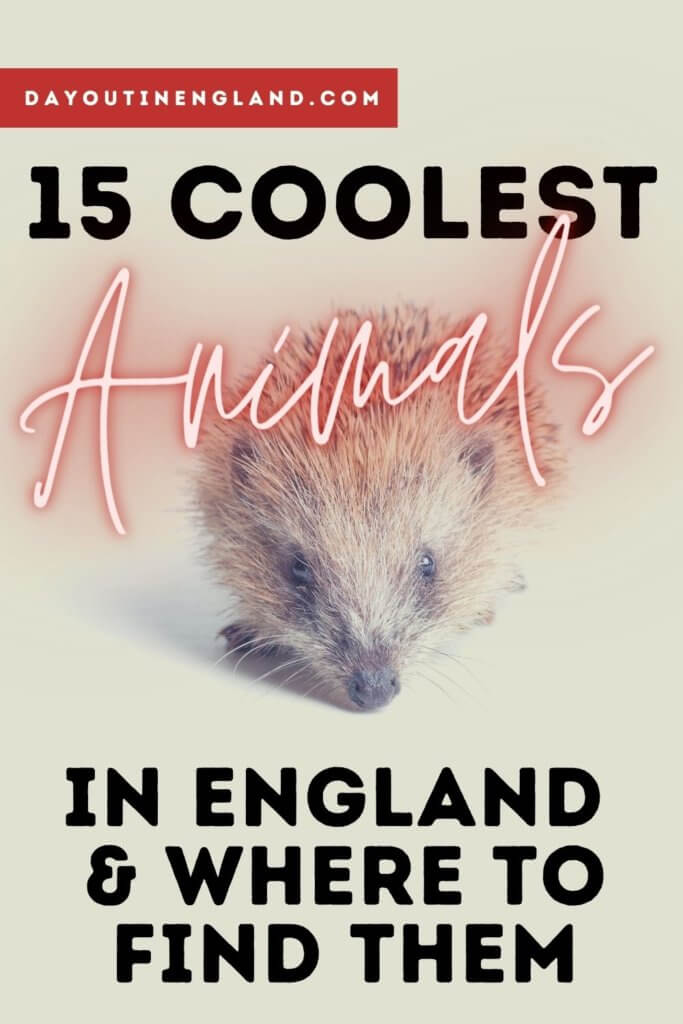
- Tenner in my pocket: The rise of alternative adventure - 23 December 2025
- Where to See the Best Christmas Lights in London (2025) - 15 October 2025
- 9 Best Pumpkin Patches in England for 2025: Where to Go Pumpkin Picking This Autumn - 14 October 2025

